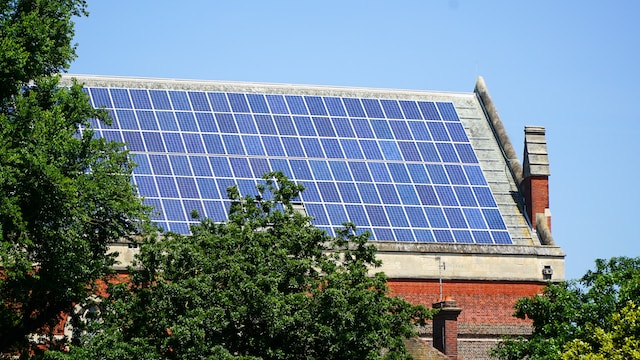A solar roof is an effective and affordable way to decrease your home’s energy costs and reduce your carbon footprint. It’s a big step towards living more sustainably and can also boost your resale value.
But before you jump into the solar roof pool, there are a few basics to know. This article will explain how a solar roof functions, its benefits and drawbacks, and how to pick the best option for your house.
How Solar Shingles Work
Solar shingles, called solar roof tiles, are thin photovoltaic panels that absorb the sun’s energy and convert it into electricity to power your home. They function like traditional shingles, protecting you and your roof from the elements and reducing energy costs.
They can be used as a stand-alone solution or added to an existing roof. They’re part of a class of PV modules called building-integrated photovoltaics, or BIPD.
These solar panels in Sunstyle are a significant change from the clunky solar arrays that were common in the past. Instead, they’re more compact, easier to install, and can look more natural on a roof.
They also don’t require a specialized frame to attach to your roof, and they can be integrated with existing asphalt shingles, shake, concrete, or tile. They have the same appearance and functionality as conventional roofing materials, which makes them an excellent choice for homeowners looking to save money on utilities while increasing the value of their properties.
What’s the Difference Between Solar Shingles and Solar Panels?
Solar shingles and solar panels convert sunlight into electricity using photovoltaic cells. They are both great clean energy options for homes and businesses but have some significant differences.
First, they have different efficiency rates and power outputs. For example, high-efficiency monocrystalline (mono) solar panels have higher efficiency rates and produce more electricity per watt than solar shingles.
Second, they have different installation modes. For example, traditional solar panels can be affixed to nearly any roof, whereas building-integrated solar shingles are designed to replace standard roofing materials.
Third, solar shingles are more expensive than traditional panels. It can vary depending on brand, roof type, and the amount of electricity you consume.
Typically, solar shingles are made with copper indium gallium selenide (CIGS) cells, which are thin and flexible and have high conversion efficiency. They can also be made from monocrystalline silicon cells, the same material as many traditional solar panels.
Traditional solar panels may be replaced with solar roof tiles, which appear less obtrusive and provide energy savings. They can also add a sleek, sophisticated look to your home.
Solar shingles are also easier to maintain than traditional solar panels, which are more resistant to bird infestations and rodents. The solar shingle installation process is also quicker than conventional solar panel systems.
They can be angled to catch the sun for maximum energy output and are a good option for new construction or roof replacement.
What’s the Difference Between Solar Roof Tiles and Solar Panels?
Solar panels are popular for homeowners who want to harness the sun’s power. They are available in various sizes and may be added as part of installing a new roof or on top of existing asphalt shingles.
Solar tiles, on the other hand, are made of thin photovoltaic (PV) sheets that overlay or replace traditional asphalt shingles. They take in solar energy and turn it into electricity, which lowers your home’s energy costs and eventually pays for itself.
Solar panels come in two varieties: monocrystalline and polycrystalline. Polycrystalline panels are created from several silicon crystals instead of monocrystalline panels made from a single monocrystalline silicon crystal.






